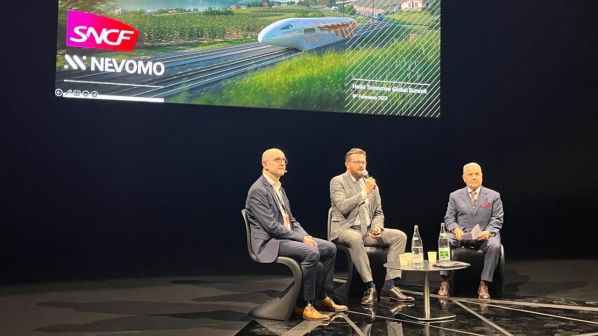FRENCH National Railways (SNCF) has signed a Memorandum of Understanding (MoU) with Nevomo to evaluate the benefits of Nevomo’s MagRail technology within the French network to increase the efficiency and capacity of passenger and freight services.
“We have noticed the high technicality of Nevomo and consider that the proposed technologies are likely to advance the railway,” says SNCF innovation director, Mr Luc Laroche. “We are therefore pleased to sign this MoU, which will cover three areas: increasing the performance of current freight trains for higher loading limits and more capacity on our freight lines; boosting the capacity on congested urban passenger lines; and evaluating MagRail as an alternative propulsion system for rural lines in combination with lightweight vehicles.”
“On the research side, this MoU is part of the collaborative actions that we carry out with innovative ecosystems to feed our scientific outlook and allow us to identify emerging technologies to explore for the railways of the future.” says SNCF director for research, Mr David De Almeida.
Nevomo plans to introduce MagRail technology to existing rail infrastructure, allowing its cost-effective upgrade, which it says will provide gradual improvements to existing networks.
“Being able to announce the cooperation publicly in Paris at the ‘Hello Tomorrow Global Summit’ together with our partner SNCF is undoubtedly the best confirmation of the credibility of our technology we can get from the market and a confirmation of the huge need for this type of mobility solution,” says Nevomo CEO and co-founder, Mr Przemek Ben Paczek.
The first 1:5 demonstration version of MagRail Nevomo was presented in 2019. Successful mid-size tests were conducted in December 2020. Last year, Nevomo completed the construction of a full-scale test track in Nowa Sarzyna in Poland, which is Europe's longest track for testing passive magnetic levitation.
Nevomo signed a year-long MoU with Italian infrastructure manager Italian Rail Network (RFI) in June 2021 to verify the technical and economic feasibility of superimposing MagRail technology on selected existing conventional rail lines.

